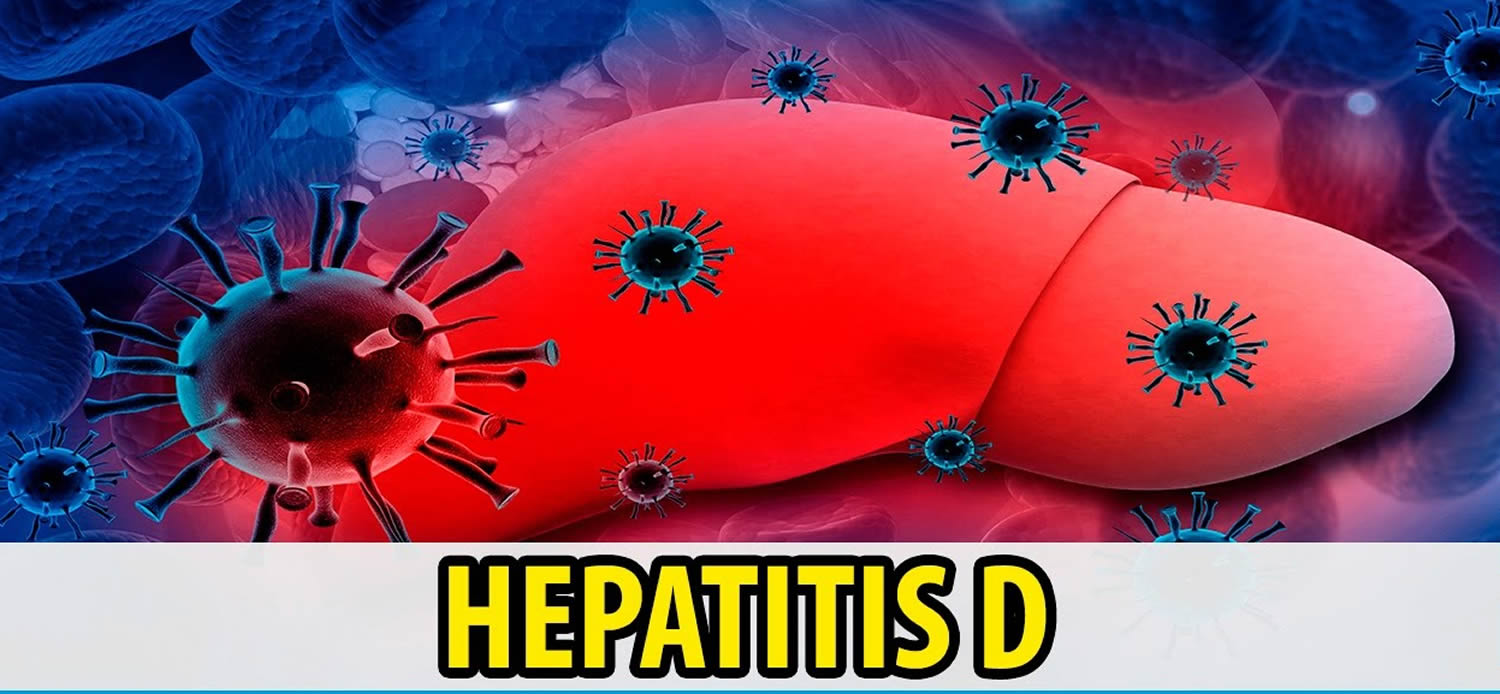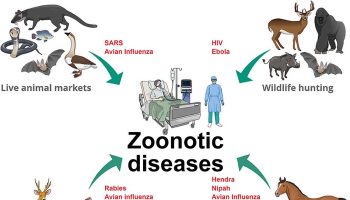Contents
What is Hepatitis D
Hepatitis D, also known as “delta hepatitis,” is a liver infection caused by the Hepatitis D virus (HDV) 1. Hepatitis D is uncommon in the United States. Hepatitis D virus (HDV) is a ribonucleic acid (RNA) virus that requires hepatitis B virus (HBV) for its replication. In other words, hepatitis D only occurs among people who are infected with the Hepatitis B virus because hepatitis D virus (HDV) is an incomplete virus that requires the helper function of hepatitis B virus (HBV) to replicate.
Hepatitis D virus (HDV) can be an acute, short-term, infection or a long-term, chronic infection. Hepatitis D is transmitted through percutaneous or mucosal contact with infectious blood or other body fluids of an infected person and can be acquired either as a coinfection with hepatitis B virus (HBV) or as superinfection in people with hepatitis B virus (HBV) infection. There is no vaccine for Hepatitis D, but it can be prevented in persons who are not already hepatitis B virus (HBV)-infected by Hepatitis B vaccination.
Hepatitis D virus (HDV) infection key facts 2:
- The hepatitis D virus can cause an acute or chronic infection, or both.
- Hepatitis D infection cannot occur in the absence of hepatitis B virus. The hepatitis D virus is unusual because it can only infect you when you also have a hepatitis B virus infection. The coinfection or super infection of hepatitis D virus (HDV) with hepatitis B virus (HBV) causes a more severe disease than hepatitis B virus (HBV) monoinfection.
- Vertical transmission from mother to child is rare.
- Approximately 15 million people across the world are chronically coinfected with Hepatitis D virus (HDV) and hepatitis B virus (HBV).
- Currently there is no effective antiviral treatment for hepatitis D.
- A vaccine against hepatitis B is the only method to prevent hepatitis D virus infection. Hepatitis D infection can be prevented by hepatitis B immunization.
Geographical distribution
It is estimated that globally, 5% of HBsAg (Hepatitis B surface antigen) positive people are coinfected with hepatitis D virus (HDV) and the distribution is worldwide. High-prevalence areas include the Mediterranean, Middle East, Pakistan, Central and Northern Asia, Japan, Taiwan, Greenland and parts of Africa (mainly the horn of Africa and West Africa), the Amazon Basin and certain areas of the Pacific. Prevalence is low in North America and Northern Europe, South Africa, and Eastern Asia.
Is a hepatitis D vaccine available ?
No vaccine for hepatitis D is currently available. The hepatitis B vaccine can prevent hepatitis D by preventing hepatitis B.
Hepatitis D transmission
The routes of hepatitis D virus (HDV) transmission are the same as for hepatitis B virus (HBV):
Hepatitis D virus (HDV) is transmitted through activities that involve percutaneous (i.e., puncture through the skin) or mucosal contact with infectious blood and various body fluids, as well as through saliva, menstrual, vaginal, and seminal fluids, including:
- Sex with an infected partner
- Injection drug use that involves sharing needles, syringes, or drug-preparation equipment
- Contact with blood or open sores of an infected person
- Needle sticks or sharp instrument exposures
- Sharing items such as razors or toothbrushes with an infected person
Sexual transmission of hepatitis D may occur, particularly in unvaccinated men who have sex with men and heterosexual persons with multiple sex partners or contact with sex workers.
The hepatitis D virus rarely spreads from mother to child during birth.
You can’t get hepatitis D from:
- being coughed on or sneezed on by an infected person
- drinking water or eating food
- hugging an infected person
- shaking hands or holding hands with an infected person
- sharing spoons, forks, and other eating utensils
- sitting next to an infected person
Vaccination against hepatitis B virus (HBV) prevents hepatitis D virus (HDV) coinfection, and hence expansion of childhood hepatitis B virus (HBV) immunization programmes has resulted in a decline in hepatitis D incidence worldwide. However, in some settings, the increase of hepatitis D prevalence has been observed in people who inject drugs, or as a result of migration from areas where hepatitis D virus (HDV) is endemic.
Who is at risk hepatitis D virus (HDV) infection ?
Chronic hepatitis B virus (HBV) carriers are at risk for infection with hepatitis D virus (HDV).
People who are not immune to hepatitis B virus (HBV) (either by natural disease or immunization with the hepatitis B vaccine) are at risk of infection with hepatitis B virus (HBV) which puts them at risk of hepatitis D virus (HDV) infection.
How can I protect myself from hepatitis D infection ?
If you do not have hepatitis B, you can prevent hepatitis D infection by taking steps to prevent hepatitis B infection, such as getting the hepatitis B vaccine. If you do not get hepatitis B, you cannot get hepatitis D.
If you already have hepatitis B, you can take steps to prevent hepatitis D infection by:
- not sharing drug needles or other drug materials
- wearing gloves if you have to touch another person’s blood or open sores
- not sharing personal items such as toothbrushes, razors, or nail clippers
How can I prevent spreading hepatitis D to others ?
If you have hepatitis D, follow the steps above to avoid spreading the infection. Your sex partners should get a hepatitis B test and, if they aren’t infected, get the hepatitis B vaccine. Preventing hepatitis B will also prevent hepatitis D.
You can protect others from getting infected by telling your doctor, dentist, and other health care professionals that you have hepatitis D. Don’t donate blood or blood products, semen, organs, or tissue.
Hepatitis D symptoms
Acute Hepatitis D
Acute hepatitis D (simultaneous infection with hepatitis B virus and hepatitis D virus) is a short-term infection. The symptoms of acute hepatitis D are the same as the symptoms of any type of hepatitis and are often more severe 3. Sometimes your body is able to fight off the infection and the virus goes away. Development of chronic hepatitis D is rare (less than 5% of acute hepatitis).
Hepatitis D signs and symptoms may include:
- Abdominal pain
- Dark urine
- Fever
- Joint pain
- Loss of appetite
- Nausea and vomiting
- Weakness and fatigue
- Yellowing of your skin and the whites of your eyes (jaundice)
Superinfection: Hepatitis D virus (HDV) can infect a person already chronically infected with hepatitis B virus. The superinfection of hepatitis D virus (HDV) on chronic hepatitis B accelerates progression to a more severe disease in all ages and in 70‒90% of persons. Hepatitis D virus (HDV) superinfection accelerates progression to cirrhosis almost a decade earlier than hepatitis B virus monoinfected persons, although hepatitis D virus (HDV) suppresses hepatitis B virus replication. The mechanism in which hepatitis D virus (HDV) causes more severe hepatitis and a faster progression of fibrosis than hepatitis B virus alone remains unclear.
Chronic Hepatitis D
Chronic hepatitis D is a long-lasting infection. Chronic hepatitis D occurs when your body is not able to fight off the virus and the virus does not go away. People who have chronic hepatitis B and D develop complications more often and more quickly than people who have chronic hepatitis B alone.20
How do doctors diagnose hepatitis D ?
Doctors diagnose hepatitis D based on your medical history, a physical exam, and blood tests. If you have hepatitis D, your doctor may perform tests to check your liver.
Medical history
Your doctor will ask about your symptoms and about factors that may make you more likely to get hepatitis D.
Physical exam
During a physical exam, your doctor will check for signs of liver damage such as:
- changes in skin color
- swelling in your lower legs, feet, or ankles
- tenderness or swelling in your abdomen
What tests do doctors use to diagnose hepatitis D ?
Your doctor may order one or more blood tests to diagnose hepatitis D. A health care professional will take a blood sample from you and send the sample to a lab.
Blood test
Your doctor may order one or more blood tests to diagnose hepatitis D. A health care professional will take a blood sample from you and send the sample to a lab.
- Hepatitis D virus (HDV) infection is diagnosed by high titres of Immunoglobulin G (IgG) and Immunoglobulin M (IgM) anti-hepatitis D virus (HDV), and confirmed by detection of hepatitis D virus (HDV) RNA in serum.
However, hepatitis D virus (HDV) diagnostics are not widely available and there is no standardization for hepatitis D virus (HDV) RNA assays, which are used for monitoring response to antiviral therapy.
Additional tests
If you have chronic hepatitis D and hepatitis B, you could have liver damage. Your doctor may recommend tests to find out whether you have liver damage or how much liver damage you have—or to rule out other causes of liver disease. These tests may include:
- blood tests.
- elastography, a special ultrasound that measures the stiffness of your liver.
- a liver biopsy, in which a doctor uses a needle to take a small piece of tissue from your liver. A pathologist will examine the tissue under a microscope to look for signs of damage or disease.
Doctors typically use liver biopsy only if other tests don’t provide enough information about the liver damage or disease. Talk with your doctor about which tests are best for you.
Hepatitis D Treatment
There is no specific treatment for acute or chronic hepatitis D virus (HDV) infection. Persistent hepatitis D virus (HDV) replication is the most important predictor of mortality and the need for antiviral therapy. Pegylated interferon alpha 4 is the only drug effective against hepatitis D virus (HDV). Doses of 1.5 ug/kg of peginterferon alfa-2b and 180 ug of peginterferon alfa-2a have been used successfully. Current recommendations from an Italian workshop include the use of pegylated interferon alpha for 48 to 72 weeks 5.
Antiviral nucleotide analogues for hepatitis B virus have no or limited effect on hepatitis D virus (HDV) replication. The optimal duration of therapy is not well defined, nor how long patients need to be hepatitis D virus (HDV) RNA negative after the end of therapy to achieve a sustained virological response. More than 1 year of therapy may be necessary.
The overall rate of sustained virological response remains low, including in children, and most patients relapse after discontinuation of therapy. Liver transplantation may be considered for cases of fulminant hepatitis and end-stage liver disease. New therapeutic agents and strategies are needed, and novel drugs, such as prenylation inhibitor or hepatitis B virus entry inhibitors, have shown early promise.
Eating, diet, and nutrition for hepatitis D
If you have hepatitis D, you should eat a balanced, healthy diet. Talk with your doctor about healthy eating. You should also avoid alcohol because it can cause more liver damage.
How do doctors treat the complications of hepatitis D ?
If chronic hepatitis D leads to cirrhosis, you should see a doctor who specializes in liver diseases. Doctors can treat health problems related to cirrhosis with medicines, surgery, and other medical procedures. If you have cirrhosis, you have a greater chance of developing liver cancer. Your doctor may order an ultrasound or other type of imaging test to check for liver cancer every 6 months.
If acute hepatitis D leads to acute liver failure, or if chronic hepatitis D leads to liver failure or liver cancer, you may need a liver transplant.
- Hepatitis D. https://www.niddk.nih.gov/health-information/liver-disease/viral-hepatitis/hepatitis-d[↩]
- Hepatitis D. http://www.who.int/mediacentre/factsheets/hepatitis-d/en/[↩]
- Farci P, Niro GA. Clinical features of hepatitis D. Seminars in Liver Disease. 2012;32(3):228‒236.[↩]
- https://medlineplus.gov/druginfo/meds/a605029.html[↩]
- Alessia Ciancio & Mario Rizzetto. Hepatitis: PEG-IFN for the treatment of hepatitis D. Nature Reviews Gastroenterology and Hepatology.2011; 8, 304-306[↩]





